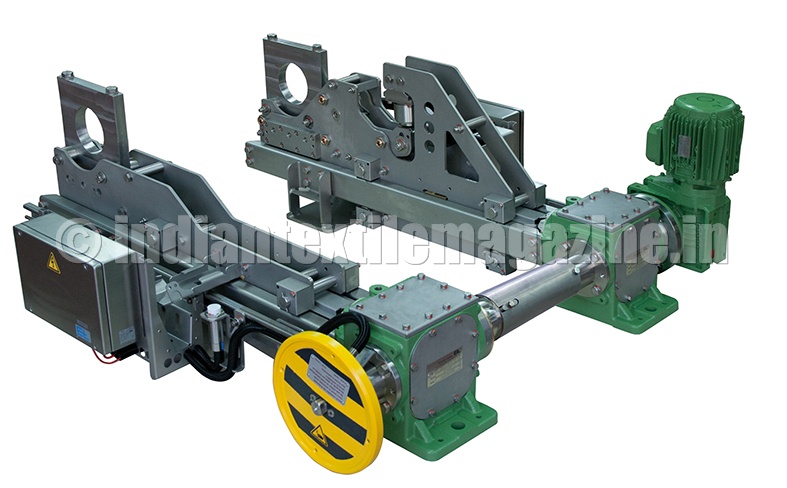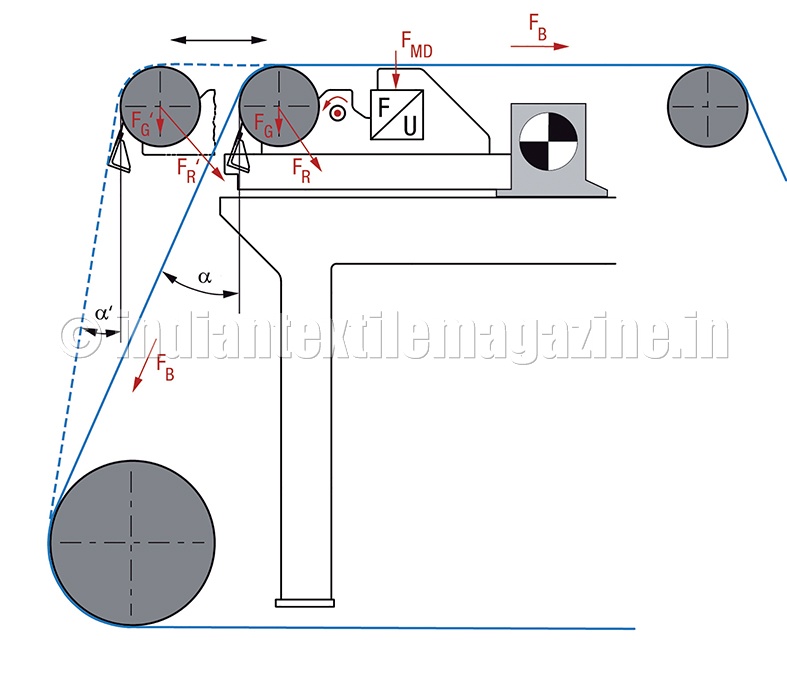Shortly before Zellcheming-Expo, Erhardt+Leimer filed a patent application for an invention that measures fabric tension using mechanical wrap angle compensation. The specialist for fabric position and fabric tension control presented this new solution at the exhibition.
In some cases the fabric tension sensor is not mounted on the actual stretch roll, but on a guide roller with constant wrapping in the stretch roll outfeed. Along with greater installation effort, this arrangement has the disadvantage that the wrapping on the guide roller is often not large enough to generate an optimal measured signal. Particularly in older wire sections it is also difficult to find a roller or wire roller guider with constant wrapping, as there are often several moving stretch rolls in the area. There is also a dead time between the measuring roller and the positioning roller that in turn can degrade the control behavior.
The solution offered up to now by E+L for fabric tension measurement in the tensioning device functioned as follows: in most systems during the process of tensioning the felt or the wire there is a change in the angle at which the fabric arrives at or leaves the stretch roll. In other words, the wrap angle changes.
Therefore varying magnitude forces act on the fabric tension sensor depending on the position of the stretch roll. Accordingly the effective fabric tension cannot be measured.
Up to now the wrap angle compensation was electronic − a patented in-house development from Erhardt+Leimer. However, for this purpose it was necessary to acquire the stretch roll position using an additional sensor and the related evaluation electronics.
New solution: mechanical compensation
The new mechanical wrap angle compensation that has now been presented at Zellcheming comprises the ingenious positioning of the measuring unit together with a movable pivot point. The distance between the pivot point and the force measuring cell as well as the geometry of the fabric tensioning system are so designed that the force on the measuring cell is constant over the entire actuating travel with constant fabric tension. The sensor therefore delivers a constant measured signal independent of the actual wrapping angle.
The advantages are clear: a separate guide roller is not necessary, which means less installation effort. Also an additional sensor for acquiring the stretch roll position and electronics for the correction of the measuring signals is not required. A further advantage is that there are no limitations on doctor blade mounting or on mounting other fabric cleaning systems.
Devices of type PD 80 are used as sensors for lever arm-type stretchers. For spindle-type stretchers E+L offers the sensor EM 08, and for chain-type stretchers the EM 10.
Redundant measurement
The sensors used are available in a two-channel version to provide a redundant function for machine reliability. It is also possible to measure on both sides.
The new solution for mechanical wrap angle compensation can be used in lever, spindle and chain-type stretchers for felt and wire and can be implemented with almost any arrangement of the infeed and outfeed rollers. Prerequisite: the infeed roller, stretch roll and the outfeed roller are arranged asymmetrically.

